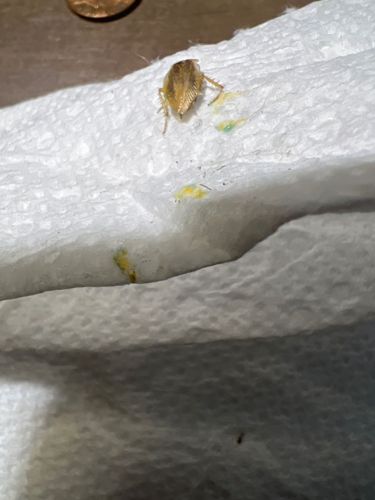Leafhopper (likely a type of planthopper or small leafhopper)
Scientific Name: Various species within the families Cicadellidae (leafhoppers) or Fulgoromorpha (planthoppers)
Order & Family: Order: Hemiptera, Suborder: Auchenorrhyncha (which includes Cicadellidae and Fulgoromorpha)
Size: Generally small, ranging from 2 mm to 15 mm in length, depending on the species.

Natural Habitat
Typically found on various plants, including grasses, shrubs, trees, and cultivated crops. They are common in gardens, agricultural fields, meadows, and forests.
Diet & Feeding
Herbivorous. They feed by inserting their piercing-sucking mouthparts into plant tissue (phloem or xylem) to extract sap. Different species may specialize on certain types of plants.
Behavior Patterns
Leafhoppers are known for their ability to jump quickly when disturbed. Many species are active during the day. They undergo incomplete metamorphosis, meaning they hatch from eggs as nymphs, which resemble smaller versions of the adults but lack fully developed wings, and molt several times before reaching adulthood.
Risks & Benefits
Risks: Many species are significant agricultural pests as they can cause direct damage to plants by feeding, leading to stunted growth, wilting, and reduced yields. More importantly, they are vectors for various plant diseases (e.g., viruses, phytoplasmas) which can be devastating to crops. Benefits: In certain ecosystems, they can serve as a food source for beneficial insects (e.g., predatory bugs, lacewings) and birds. Some species may contribute to nutrient cycling through their feeding activity.
Identified on: 9/11/2025